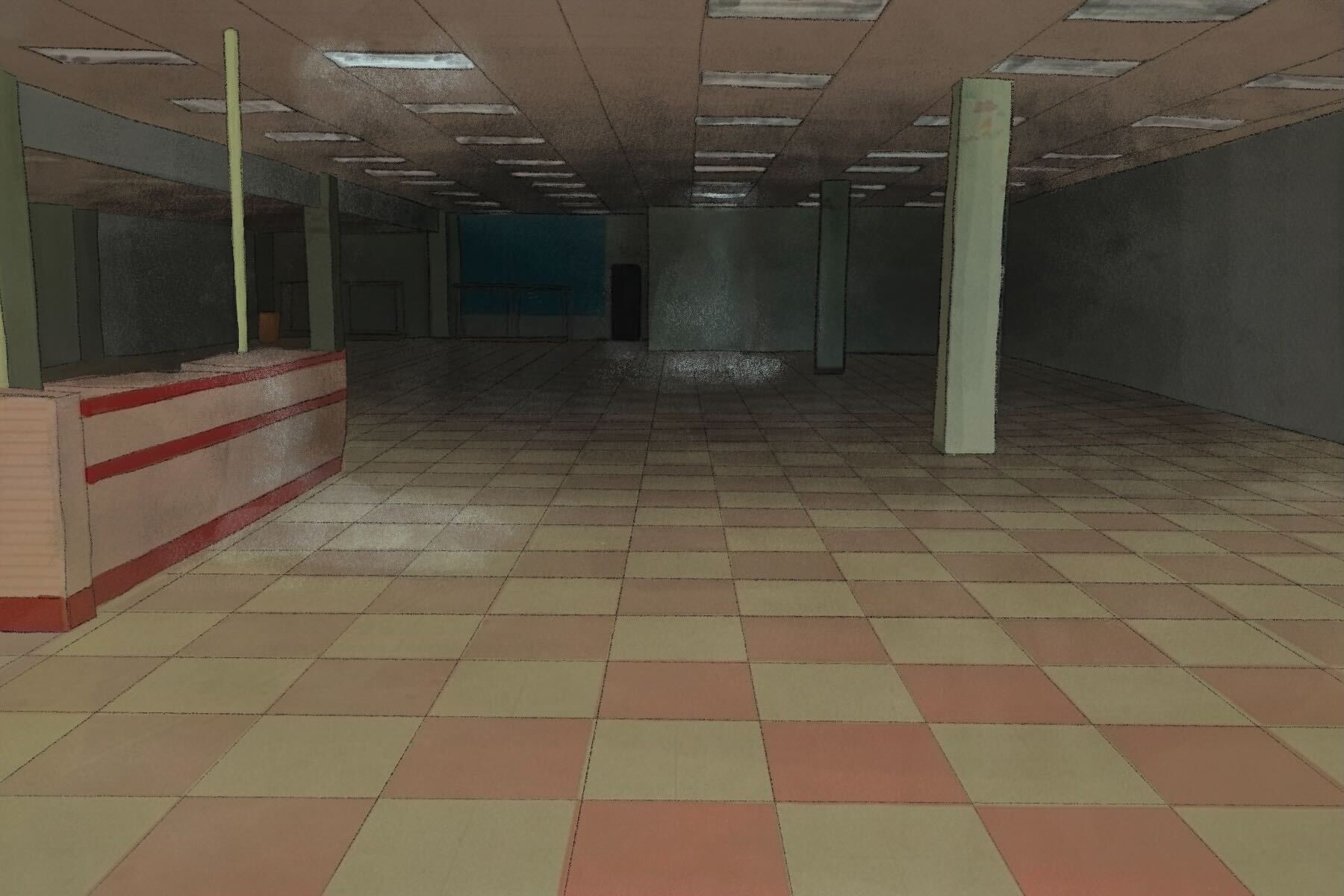Ever stepped into a place where something just feels off? It might feel unnerving — like something should be there but is missing. It might not be a fully conscious sensation; instead, it might be lingering in the visceral part of the mind. A just-barely-there feeling. Sometimes, it passes quickly as a temporary state, but in other cases, it can be a semi-permanent characteristic of a certain place.
All of the above are characteristics of liminal spaces: in-between places not usually meant for anyone to remain there for long. They are usually physical spaces that connect one place to another such as stairwells, hallways or even parking lots, especially when they’re empty.
The concept of liminality has been around for a long time and has its roots in social anthropology. The term was originally derived from the Latin word limen, which simply means “threshold.” Liminality was first coined by Arnold Van Gennep in his book “Rites de Passage” in 1908. As the name of the book implies, it is about his observations of the rites of passages in smaller societies.
Gennep observed a very distinct point in time during rites of passages, which is the transition itself between one state to another. One well-known rite of passage, for example, is the coming-of-age ritual marking the transition of childhood into adulthood. The liminality in this example is the stage of puberty that occurs between the two states. Other transitional states can be observed such as graduating high school or moving to a new city.
Liminality is pretty broad in nature, but the concept has been explored deeply, especially in anthropology, psychology and religion. It’s even everywhere in pop culture from “The Twilight Zone,” when Rod Serling describes the fifth dimension as “the middle ground between light and shadow,” to the “Twilight” series, where Stephenie Meyer titles each book after a specific transitional point in nature, including “New Moon,” “Eclipse” and “Breaking Dawn.”
However, as mentioned at the beginning of the article, liminality isn’t necessarily just an abstract concept. It also exists within the physical realm as liminal spaces. Liminal spaces have been trending upward on Google Search since 2020. It’s no wonder, though, since it could be argued that the world collectively went through a transition from a pre-pandemic era to an era where health and travel restrictions currently exist in ways they haven’t before.
As liminal spaces gained traction on the internet, though, the definition of what such a space consisted of expanded to include places evoking an ominous or disturbing feeling. They often also play on the sense of isolation one feels in the area.
The pandemic had, for example, prompted the lockdown of cities all over the world. It was an extremely eerie experience stepping outside at any point during lockdown when the city streets, which had been packed with people days or months before, were now dead silent with barely anyone in sight.
It’s hard to pinpoint why liminal spaces are so fascinating to many people. The sense of dread presented by some of these places is reminiscent of the tension in horror movies when the main character finds themselves in a creepy-looking room somewhere. A malevolent being may or may not be there, but the not-knowing contributes to the creepiness factor. The opposite scenario can also be just as disturbing: if someone finds themselves in a place that was once filled with a lot of people but is now a completely empty shell of its former self.
Currently, r/LiminalSpace is probably the most popular place on the internet for people to talk about such places. In the “About Community” section, it describes liminal spaces as “the time between the ‘what was’ and the ‘next.’ It is a place of transition, waiting, and not knowing. Liminal space is where all transformation takes place, if we learn to wait and let it form us.”
The users often share pictures of the liminal spaces they come across during their everyday lives. One user posted an image of an empty parking lot next to a hospital in the early hours of the morning. The plants in the foreground are dark silhouettes while the lot itself is lit in a green hue by the parking lot lights. It gives off some seriously creepy vibes, which normally wouldn’t be there during regular daylight hours when it’s full of people and cars.
Hospital parking lot on a foggy morning
byu/InmyBackyard2 inLiminalSpace
Another post in the same subreddit is a picture of a swimming pool that the original poster visited with his girlfriend. The whole picture feels weirdly uncanny. The colors of the mural in the background along with the animated mushroom and snail statues contrast with how antiquated the swimming pool, or even the entire room, looks. It feels like a relic of the past still haunted by the energy of what was — if that makes any sense at all.
This hotel pool my girlfriend and I just swam in
byu/Jacobklassen inLiminalSpace
In a similar vein, liminal spaces can evoke feelings of intense nostalgia. They often take the form of empty or abandoned places that were once popular, especially during the ‘80s or ‘90s.
In yet the same subreddit, a user posted a picture of an abandoned building with the imprint of a suspiciously familiar logo once belonging to a popular video rental store. An even better liminal space photo would be the same store but from the inside, devoid of people but teeming with merchandise.
I don’t know if this has been posted yet.
byu/Supergenius18 inLiminalSpace
Other nostalgic posts like those featuring the once prominent Kmart stores occasionally make an appearance. It’s hard to explain exactly what makes nostalgic spaces so enticing. The empty stores can feel kind of depressing at first, but at the same time, the emptiness of the space allows the viewer to project their own memories onto the scene. The juxtaposition between the reality of the abandoned space and the richness of one’s own memories of the space can bring on a peculiar sort of dissonance.
RIP Kmart (photo credit unknown)
byu/CringeyChris_78 inLiminalSpace
Besides photography, many other types of mediums communicate liminality. Urban explorations are notorious for this because they often exclusively feature abandoned places. The YouTube video by The Proper People features an abandoned mall still lit by neon signs that give the place an intensely surreal atmosphere.
It’s easy to get lost in the rabbit hole of liminality. Once exposed to the concept, it becomes hard to unsee it since it can be found everywhere. Liminal spaces can be created by people both unintentionally, such as the source maps in videogames, or intentionally, through computer-rendered images regularly posted on Reddit like this one.
I saw this place in my dreams (OC)
byu/Wallaxi inLiminalSpace
Liminality has existed since the beginning of time but has only been recognized recently. In a short time, it amassed a cult following that continues to showcase and admire the oddities surrounding people every day.


















You have an amazing way with words. This article was as informative as it was beautifully written.
Thank you for brightening up my feed today. So glad I came across this.